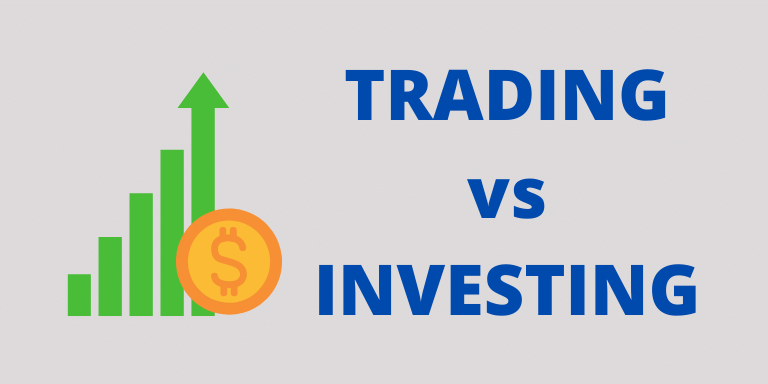Thank you for reading this post, don't forget to Join Our Telegram Group! CLICK HERE TO JOIN NEW
What is trading and investing in the stock market?
In the dynamic world of finance, two terms that are often used interchangeably are called “trading” and “investing.”
While both involve participation in the stock market, they represent different approaches with different goals, time frames, and risk levels.
As an experienced content writer with over a decade of experience in stock market-related articles, let’s delve deeper into the concepts of trading and investing, highlighting their key differences and the strategies that guide each practice.
What is trading?
Trading is the frequent buying and selling of financial instruments such as stocks, bonds, options and currencies within relatively short periods of time. Traders want to capitalize on short-term price fluctuations and market volatility.
They are motivated by the potential for quick profits and typically engage in various trading styles such as day trading, swing trading and scalping.
Day trading
Day trading involves executing multiple trades on the same trading day, with all positions closed before the market closes.
Day traders focus on intraday price movements and use technical analysis, charts and patterns to identify potential entry and exit points.
This style requires precision, discipline and the ability to manage risk effectively.
Swing trading
Swing trading involves holding positions over several days or weeks with the aim of profiting from short to medium-term price fluctuations.
Swing traders use technical and fundamental analysis to identify trends and price reversals.
This strategy allows for more flexibility compared to day trading and appeals to people looking for a balanced approach between short-term profits and reduced time commitment.
Scalping
Scalping is a high-frequency trading style in which traders execute multiple quick trades throughout the day with the aim of profiting from small price movements.
Scalpers often prioritize liquid assets and rely heavily on technical analysis, using strict stop-loss orders to manage risk.
This strategy requires focus, precision and a deep understanding of market mechanisms.
What is investing?
Investing, on the other hand, is about a longer-term approach with the primary goal of building wealth over time.
Investors want to create a diversified portfolio of assets that meets their financial goals, risk tolerance and time horizon.
Buy and hold investments
Buy-and-hold investing is a passive strategy in which investors purchase assets and hold them for an extended period of time, often years or even decades.
The goal is to benefit from the power of compound interest and the overall growth of the economy.
This approach is popular with long-term investors who believe in the potential of their chosen companies and are prepared to weather market fluctuations.
Value investing
Value investing is all about identifying undervalued stocks using fundamental analysis.
Investors look for companies with strong financials, attractive valuation metrics, and a perceived market value that is lower than their intrinsic value.
The goal is to benefit from potential price increases when the market realizes the true value of the stock.
Growth investments
Growth investing focuses on companies with significant growth potential, even if their current valuation appears high.
Investors expect these companies to continue to expand and generate significant returns over time.
This strategy often targets technology, healthcare, and other sectors known for innovation and growth.
Key differences and considerations
The differences between trading and investing go beyond time frames and goals.
Traders often use leverage to increase their profits, but doing so also magnifies potential losses.
Additionally, trading requires constant monitoring of the market and quick decision making, which can be mentally and emotionally taxing.
Investing, on the other hand, requires patience and a long-term perspective.
Although it may offer higher returns, it also requires tolerance for market downturns and the discipline to stick to a well-thought-out investment plan
FAQs
Q: What is the main difference between trading and investing?
Q: Which approach involves more risk: trading or investing?
Q: What skills are essential for successful trading?
Q: What skills are required for successful investing?
Q: How much time is required to trade?
Q: How much time investment is required?
Q: Are there tax implications for traders?
Q: What psychological factors should traders pay attention to?
Q: What psychological factors should investors pay attention to?
Q: Which approach offers higher return potential: trading or investing?
Diploma
In summary, trading and investing represent different approaches to participating in the stock market. Trading involves frequent buying and selling within short periods of time with the aim of profiting from price volatility.
Vice versa, invest focuses on long-term wealth creation through a diversified portfolio.
Both approaches have their advantages and disadvantages, and individuals should carefully consider their financial goals, risk tolerance, and time availability when choosing a strategy.
Whether you choose to become a trader or an investor, understanding the nuances of each approach is critical to success in the complex world of the stock market.
This information is provided for educational purposes and no recommendations are made. Before making any investments, it is recommended that you seek advice from a financial advisor.
Disclaimer:
This information is provided for educational purposes and no recommendations are made. Before making any investments, it is recommended that you seek advice from a financial advisor.
Objection: How many stars out of 5 would you give this book? Please express your likes/dislikes by leaving a review below.
For more blog posts click on the link mentioned: https://wealthgif.com
Join My Telegram Channel And Dont Forget To Share
